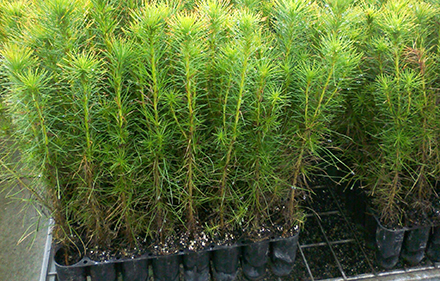
More than 3000 hectares of pine seedlings have been planted across Forestry Corporation of NSW plantations in the South West Slopes during the annual winter planting program. Forestry Corporation’s Operations Scheduler Teresa Baker said around 100 contract staff had been brought on board for planting season, which runs from June to August. Source: Timberbiz
According to the NSW Department of Industry, the South West Slopes softwood plantation industry contributes $1014 million to the local economy, so this is a significant sector.
Forestry Corporation has around 230,000 hectares of pine plantations in NSW and produces enough timber to construct a quarter of the homes built in Australia each year.
“Each winter we re-establish around 8000 hectares of pine plantations across NSW and about 70% of these are in the South West,” Ms Baker said.
“This year we planted over 3.2 million radiata pine seedlings over an area roughly equivalent to 6000 football fields to restock plantations that have been harvested for timber in recent years.
“The seedlings were predominantly grown in Forestry Corporation’s production nursery at Tumut and planted throughout the Tumut and Tumbarumba region, including a large part of Buccleuch State Forest, as well as in plantations in Green Hills, Bago and Carabost State Forests.
“We plant in winter when pine seedlings are dormant, which makes them hardier and more resilient to the stress of being planted to give it the best chance of survival.
“Each seedling is planted by hand and an experienced planter can plant around 2000 seedlings in one day.
“The ground in each plantation has been carefully prepared, cultivated and treated for weed control to give the seedlings the best start possible, but like any crop the seedlings are still susceptible to extreme weather conditions such as snow and wind damage, so we’ll need to keep an eye on them to monitor how they are growing.
“This season has proven to be quite dry, which has been a challenge because the more rain we receive the better the seedling survival rates. “
If the seedlings survive the next 12 months, they are likely to make it to harvest in 20 to 30 years’ time.
The seedlings planted today will grow into the trees used to build the new houses, home extensions and backyard fences decades from now, so this is one of the most important times in the plantation cycle.







